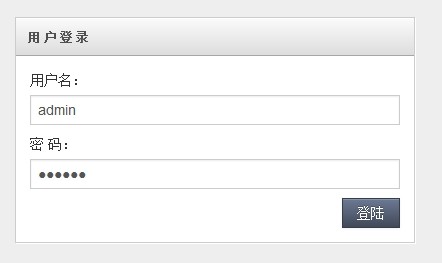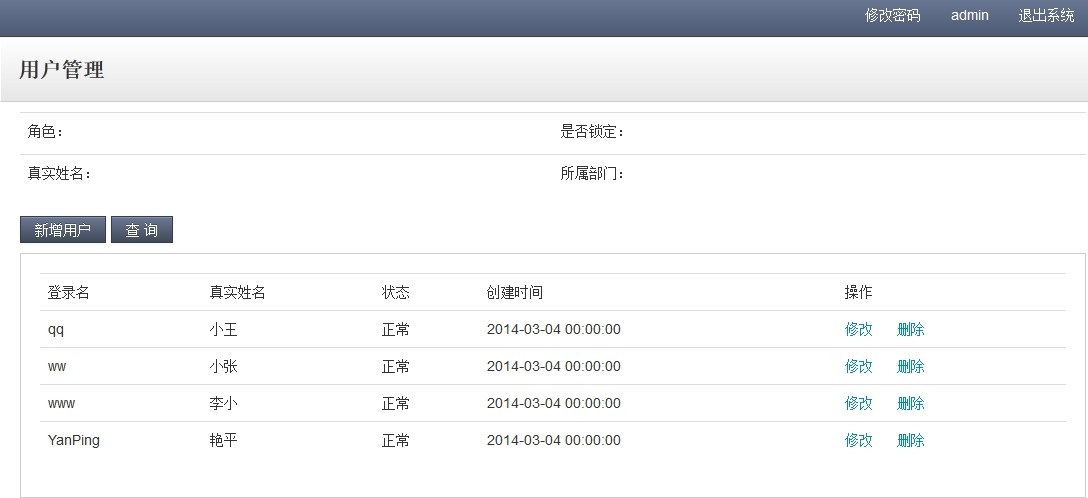現在大型的電子商務系統,在數據庫層面大都采用讀寫分離技術,就是一個Master數據庫,多個Slave數據庫。Master庫負責數據更新和實時數據查詢,Slave庫當然負責非實時數據查詢。因為在實際的應用中,數據庫都是讀多寫少(讀取數據的頻率高,更新數據的頻率相對較少),而讀取數據通常耗時比較長,占用數據庫服務器的CPU較多,從而影響用戶體驗。我們通常的做法就是把查詢從主庫中抽取出來,采用多個從庫,使用負載均衡,減輕每個從庫的查詢壓力。
采用讀寫分離技術的目標:有效減輕Master庫的壓力,又可以把用戶查詢數據的請求分發到不同的Slave庫,從而保證系統的健壯性。我們看下采用讀寫分離的背景。
隨著網站的業務不斷擴展,數據不斷增加,用戶越來越多,數據庫的壓力也就越來越大,采用傳統的方式,比如:數據庫或者SQL的優化基本已達不到要求,這個時候可以采用讀寫分離的策 略來改變現狀。
具體到開發中,如何方便的實現讀寫分離呢?目前常用的有兩種方式:
1 第一種方式是我們最常用的方式,就是定義2個數據庫連接,一個是MasterDataSource,另一個是SlaveDataSource。更新數據時我們讀取MasterDataSource,查詢數據時我們讀取SlaveDataSource。這種方式很簡單,我就不贅述了。
2 第二種方式動態數據源切換,就是在程序運行時,把數據源動態織入到程序中,從而選擇讀取主庫還是從庫。主要使用的技術是:annotation,Spring AOP ,反射。下面會詳細的介紹實現方式。
在介紹實現方式之前,我們先準備一些必要的知識,spring 的AbstractRoutingDataSource 類
AbstractRoutingDataSource這個類 是spring2.0以后增加的,我們先來看下AbstractRoutingDataSource的定義:
public abstract class AbstractRoutingDataSource extends AbstractDataSource implements InitializingBean {}
AbstractRoutingDataSource繼承了AbstractDataSource ,而AbstractDataSource 又是DataSource 的子類。DataSource 是javax.sql 的數據源接口,定義如下:
|
1
2
3
4
5
6
7
8
9
10
11
12
13
14
15
16
17
18
19
20
21
22
23
24
25
26
|
public interface DataSource extends CommonDataSource,Wrapper { /** * <p>Attempts to establish a connection with the data source that * this <code>DataSource</code> object represents. * * @return a connection to the data source * @exception SQLException if a database access error occurs */ Connection getConnection() throws SQLException; /** * <p>Attempts to establish a connection with the data source that * this <code>DataSource</code> object represents. * * @param username the database user on whose behalf the connection is * being made * @param password the user's password * @return a connection to the data source * @exception SQLException if a database access error occurs * @since 1.4 */ Connection getConnection(String username, String password) throws SQLException;} |
DataSource 接口定義了2個方法,都是獲取數據庫連接。我們在看下AbstractRoutingDataSource 如何實現了DataSource接口:
|
1
2
3
4
5
6
7
|
public Connection getConnection() throws SQLException { return determineTargetDataSource().getConnection(); } public Connection getConnection(String username, String password) throws SQLException { return determineTargetDataSource().getConnection(username, password); } |
很顯然就是調用自己的determineTargetDataSource() 方法獲取到connection。determineTargetDataSource方法定義如下:
|
1
2
3
4
5
6
7
8
9
10
11
12
|
protected DataSource determineTargetDataSource() { Assert.notNull(this.resolvedDataSources, "DataSource router not initialized"); Object lookupKey = determineCurrentLookupKey(); DataSource dataSource = this.resolvedDataSources.get(lookupKey); if (dataSource == null && (this.lenientFallback || lookupKey == null)) { dataSource = this.resolvedDefaultDataSource; } if (dataSource == null) { throw new IllegalStateException("Cannot determine target DataSource for lookup key [" + lookupKey + "]"); } return dataSource; } |
我們最關心的還是下面2句話:
|
1
2
|
Object lookupKey = determineCurrentLookupKey();DataSource dataSource = this.resolvedDataSources.get(lookupKey); |
determineCurrentLookupKey方法返回lookupKey,resolvedDataSources方法就是根據lookupKey從Map中獲得數據源。resolvedDataSources 和determineCurrentLookupKey定義如下:
|
1
2
3
|
private Map<Object, DataSource> resolvedDataSources;protected abstract Object determineCurrentLookupKey() |
看到以上定義,我們是不是有點思路了,resolvedDataSources是Map類型,我們可以把MasterDataSource和SlaveDataSource存到Map中,如下:
| key | value |
| master | MasterDataSource |
| slave | SlaveDataSource |
我們在寫一個類DynamicDataSource 繼承AbstractRoutingDataSource,實現其determineCurrentLookupKey() 方法,該方法返回Map的key,master或slave。
好了,說了這么多,有點煩了,下面我們看下怎么實現。
上面已經提到了我們要使用的技術,我們先看下annotation的定義:
|
1
2
3
4
5
|
@Retention(RetentionPolicy.RUNTIME)@Target(ElementType.METHOD)public @interface DataSource { String value();} |
我們還需要實現spring的抽象類AbstractRoutingDataSource,就是實現determineCurrentLookupKey方法:
|
1
2
3
4
5
6
7
8
9
10
11
12
13
14
15
16
17
18
19
20
21
22
|
public class DynamicDataSource extends AbstractRoutingDataSource { @Override protected Object determineCurrentLookupKey() { // TODO Auto-generated method stub return DynamicDataSourceHolder.getDataSouce(); }}public class DynamicDataSourceHolder { public static final ThreadLocal<String> holder = new ThreadLocal<String>(); public static void putDataSource(String name) { holder.set(name); } public static String getDataSouce() { return holder.get(); }} |
從DynamicDataSource 的定義看出,他返回的是DynamicDataSourceHolder.getDataSouce()值,我們需要在程序運行時調用DynamicDataSourceHolder.putDataSource()方法,對其賦值。下面是我們實現的核心部分,也就是AOP部分,DataSourceAspect定義如下:
|
1
2
3
4
5
6
7
8
9
10
11
12
13
14
15
16
17
18
19
20
21
22
23
24
25
|
public class DataSourceAspect { public void before(JoinPoint point) { Object target = point.getTarget(); String method = point.getSignature().getName(); Class<?>[] classz = target.getClass().getInterfaces(); Class<?>[] parameterTypes = ((MethodSignature) point.getSignature()) .getMethod().getParameterTypes(); try { Method m = classz[0].getMethod(method, parameterTypes); if (m != null && m.isAnnotationPresent(DataSource.class)) { DataSource data = m .getAnnotation(DataSource.class); DynamicDataSourceHolder.putDataSource(data.value()); System.out.println(data.value()); } } catch (Exception e) { // TODO: handle exception } }} |
為了方便測試,我定義了2個數據庫,shop模擬Master庫,test模擬Slave庫,shop和test的表結構一致,但數據不同,數據庫配置如下:
|
1
2
3
4
5
6
7
8
9
10
11
12
13
14
15
16
17
18
19
20
21
22
23
24
25
26
27
28
29
30
31
32
33
34
35
36
37
38
39
40
|
<bean id="masterdataSource" class="org.springframework.jdbc.datasource.DriverManagerDataSource"> <property name="driverClassName" value="com.mysql.jdbc.Driver" /> <property name="url" value="jdbc:mysql://127.0.0.1:3306/shop" /> <property name="username" value="root" /> <property name="password" value="yangyanping0615" /> </bean> <bean id="slavedataSource" class="org.springframework.jdbc.datasource.DriverManagerDataSource"> <property name="driverClassName" value="com.mysql.jdbc.Driver" /> <property name="url" value="jdbc:mysql://127.0.0.1:3306/test" /> <property name="username" value="root" /> <property name="password" value="yangyanping0615" /> </bean> <beans:bean id="dataSource" class="com.air.shop.common.db.DynamicDataSource"> <property name="targetDataSources"> <map key-type="java.lang.String"> <!-- write --> <entry key="master" value-ref="masterdataSource"/> <!-- read --> <entry key="slave" value-ref="slavedataSource"/> </map> </property> <property name="defaultTargetDataSource" ref="masterdataSource"/> </beans:bean> <bean id="transactionManager" class="org.springframework.jdbc.datasource.DataSourceTransactionManager"> <property name="dataSource" ref="dataSource" /> </bean> <!-- 配置SqlSessionFactoryBean --> <bean id="sqlSessionFactory" class="org.mybatis.spring.SqlSessionFactoryBean"> <property name="dataSource" ref="dataSource" /> <property name="configLocation" value="classpath:config/mybatis-config.xml" /> </bean> |
在spring的配置中增加aop配置
|
1
2
3
4
5
6
7
8
9
10
|
<!-- 配置數據庫注解aop --> <aop:aspectj-autoproxy></aop:aspectj-autoproxy> <beans:bean id="manyDataSourceAspect" class="com.air.shop.proxy.DataSourceAspect" /> <aop:config> <aop:aspect id="c" ref="manyDataSourceAspect"> <aop:pointcut id="tx" expression="execution(* com.air.shop.mapper.*.*(..))"/> <aop:before pointcut-ref="tx" method="before"/> </aop:aspect> </aop:config> <!-- 配置數據庫注解aop --> |
下面是MyBatis的UserMapper的定義,為了方便測試,登錄讀取的是Master庫,用戶列表讀取Slave庫:
|
1
2
3
4
5
6
7
8
9
10
11
12
13
14
15
16
17
18
19
|
public interface UserMapper { @DataSource("master") public void add(User user); @DataSource("master") public void update(User user); @DataSource("master") public void delete(int id); @DataSource("slave") public User loadbyid(int id); @DataSource("master") public User loadbyname(String name); @DataSource("slave") public List<User> list();} |
好了,運行我們的Eclipse看看效果,輸入用戶名admin 登錄看看效果

 以上就是本文的全部內容,希望對大家的學習有所幫助,也希望大家多多支持服務器之家。
以上就是本文的全部內容,希望對大家的學習有所幫助,也希望大家多多支持服務器之家。
原文鏈接:http://www.cnblogs.com/surge/p/3582248.html















